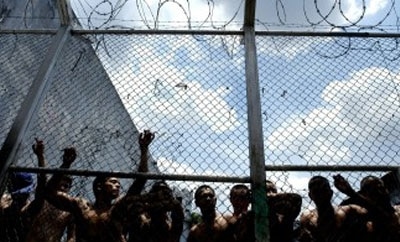Nicaragua’s plan to build five new prisons with money seized from alleged drug traffickers is an illustration of how governments can use confiscated goods to fight organized crime.
Nicaraguan Interior Minister Ana Isabel Morales told journalists that of the $9.2 million seized from 18 Mexicans arrested while entering the country posing as Televisa journalists, $7.2 million will be used to construct at least five new prisons in the country, reported EFE.
The suspects were detained on August 20, having entered Nicaragua claiming to be covering the trial of now-convicted drug trafficker Henry Fariñas. They are set to face trial in Nicaragua for money laundering and drug trafficking, beginning December 3.
Among the prisons to be built will be a maximum security facility to house drug traffickers and inmates with links to organized crime. The director of the National Penitentiary System, Maria Salgado, said that this type of criminal makes up 25 percent of the current prison population. Among these are foreigners with links to Mexican groups such as the Zetas, and the Sinaloa and Gulf Cartels, she added.
The remaining $2 million of the seized money is being given to the Nicaraguan police to purchase equipment, according to El Nuevo Diario.
InSight Crime Analysis
Assets and money seized from organized criminal groups in the region could provide under-resourced governments with a valuable source of funding for institutions that are designed to tackle crime. Colombia’s Attorney General’s Office, for example, seized around $242 million in criminal assets last year, while Guatemala seized almost $1.3 billion in drugs and assets from January to September this year. However, policies on making use of these assets differ across the region.
Even when seized assets are legally designated for state use, there is no guarantee that the process will be straightforward. Honduras passed a law in late 2010 that facilitated the distribution of seized assets among government ministries and the police, but it faced a number of problems thanks to crippling bureaucracy. President Porfirio Lobo last year called for the process to be streamlined, with money separated from other assets and used to fund the security forces.
A report by El Universal last year found that the Mexican authorities had sold off over 1,700 seized properties between 2008 and May 2011, often at a discounted rate. It is unclear how the proceeds were used, and the newspaper found that most of the sales appeared to have been handled by a small number of officials and that the process lacked transparency.
One country to have carried out a similar scheme to Nicaragua is Colombia. In 2004, a plan was approved for the building of 15 new prisons at the cost of 500 billion pesos (over $270 million at today’s exchange rate) with the greater part of the funding coming from assets and cash seized from drug traffickers.
Nicaragua’s plan to use the majority of the money to build prisons could help mitigate the country’s overcrowding problem — statistics released by the International Center for Prison Studies in 2011 show that the country’s penitentiary system is running at 133 percent capacity.
The Nicaraguan project is a good example of how illicit proceeds can be turned against criminals. However, much work needs to be done to both streamline these policies in order to avoid red tape and also to prevent corrupt officials from taking a cut of the seizures.
One thing that does seem odd about that Nicaragua case is that those who the money was seized from have yet to be convicted — the plans will presumably have to be scrapped if they are found innocent.

